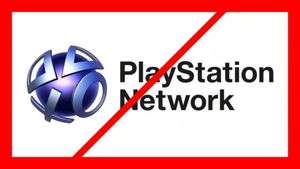With the 2025 German Federal Election approaching, voters are increasingly turning to digital tools to help them navigate their political choices. One of the most recognized among these is the Wahl-O-Mat, which will be available to the public starting February 6, 2025. This interactive online tool, developed by the Bundeszentrale für politische Bildung (Federal Agency for Civic Education), allows users to answer 38 political statements to determine which registered parties align most closely with their views.
The launch of the Wahl-O-Mat provides guidance for the many undecided voters leading up to the election on February 23, 2025. Engaging with the Wahl-O-Mat involves answering various statements wherein respondents can indicate their agreement, disagreement, neutrality, or choose to skip the statement. The results are then summarized to indicate how closely the user's views mirror those of the participating parties.
A total of 29 parties have joined the Wahl-O-Mat, including prominent names such as the SPD, Greens, FDP, and AfD. Critically, this tool has previously garnered significant attention, with 21.3 million uses recorded during the last election. Since its introduction at the 2002 federal election, the Wahl-O-Mat has collectively seen approximately 130 million uses, reflecting its growing importance as a resource for voters.
Beyond the digital version, there's also the innovative analog Wahl-O-Mat style event which promotes face-to-face discussions among voters. Kicking off its tour with its first event in Dresden, this initiative invites individuals to discuss political statements collectively. Thomas Platz, spokesperson for the Landeszentrale für politische Bildung Sachsen, emphasized the importance of bringing people together to engage with political topics. "Mit dem analogen Bruder des digitalen Wahl-O-Maten wollen wir einladen, miteinander ins Gespräch zu kommen, politische Themen zu vergleichen und im besten Fall zu einer Wahlentscheidung zu gelangen," he stated. This approach aims to make political discourse more tangible and interactive, allowing people to visibly express their opinions using stickers to indicate agreement or disagreement on large displays of opinions.
One user of the analog Wahl-O-Mat, 18-year-old Emil, pointed out how the face-to-face format provided insights not available through the online tool. "Ich habe die Thesen online schon geklickt, doch hier sind die Meinungen sichtbar. Man sieht, was die anderen denken und man kann mit ihnen darüber sprechen. Das ist für mich Demokratie," he shared. This demonstrates the potential of engaging tools like the analog Wahl-O-Mat to turn passive voters more active by fostering dialogue.
While the Wahl-O-Mat is widely embraced as a helpful voter aid, it is not without its criticisms. Some argue the tool may disadvantage smaller parties, which often focus on fewer topics and could find it difficult to be represented fully. While the Bundeszentrale defends its role by asserting it offers less-known parties media attention, critics are concerned about the future promises made by these parties, which have no assurance of fulfillment. "Problematisch kann der Wahl-O-Mat für kleine Parteien sein, die sich auf einige wenige Themen konzentrieren und nicht das ganze Spektrum abdecken," noted critics, reflecting concerns about the tool’s efficacy as comprehensive guidance.
To aid voters seeking alternatives to the Wahl-O-Mat, various online tools have emerged. Some utilize similar question-and-answer formats, allowing users to align their views with those of political parties. Others leverage artificial intelligence to create chatbots enabling discussions about party platforms and histories. For many users, this plethora of options creates confidence as they approach the voting booth.
Matthis Strobel, who recently volunteered at the analog Wahl-O-Mat event, shown excitement about its format. "Der analoge Wahl-O-Mat bringt die Menschen ins Gespräch, das finde ich toll daran," he complimented, highlighting the importance of the tool's ability to lower barriers to political engagement. The analog format serves as particularly appealing to younger generations who may feel alienated by traditional political conversations.
Overall, as the election date approaches, both the digital and analog versions of the Wahl-O-Mat provide valuable resources for voters. The integration of new technologies with traditional formats promises to bridge gaps between parties and the electorate, helping individuals navigate their choices during this pivotal democratic moment. Engaging with these tools offers every voter insight and clarity they need as they prepare to cast their vote on February 23, 2025.



